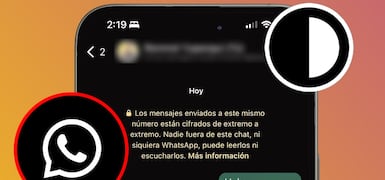
Winter time in California is just a few days away from starting this 2023 and there are still citizens and visitors who have doubts about when it starts, what to do and why the time changes. It is about the time change that will happen this first Sunday (November 5) at 2:00 a.m. when the clocks “go back” one hour with respect to standard time. That is to say, when the hands mark the mentioned time, they will go to 1 a.m.
The reason behind these time changes lies in the idea of making the most of natural daylight. Daylight saving time, which begins on the second Sunday in March and ends on the first Sunday in November, aims to provide people with more natural daylight in the afternoons, which, in theory, can lead to increased economic activity and energy savings.
In the United States, time changes are regulated by the Uniform Time Act, passed in 1966. This law establishes the start and end dates for daylight saving time. However, it is important to mention that the states of Hawaii and Arizona do not participate in Daylight Saving Time.
Time change in California this Sunday, November 5
This is how you should adjust your clock time in the state of California, United States, this Sunday, November 5.
- Wait until it is 2 am daylight saving time.
- When it is 2 am in the morning, move the hand of your watch back one hour.
- This will set your watch back to 1 am ET, which starts the new standard time.
- In short, 2 am will transition to 1 am twice a year.
What is Daylight Saving Time?
Congress passed a law in 1918 establishing daylight saving time to help save energy costs during World War I, according to the Department of Defense.
In 1966, Congress passed the Uniform Time Act, establishing a national standard time that permanently replaced local times. It established daylight saving time from the last Sunday in April through the last Sunday in October.
In which states will the time not be changed?
All U.S. states observe the annual time change, except Hawaii and Arizona and most U.S. territories, including Guam and Puerto Rico, which choose not to use Daylight Saving Time and remain on standard time year-round. This is due to several factors:
- Climate: Arizona and Hawaii have warm climates year-round, so daylight saving is not as necessary.
- Geography: Arizona is in the Sonoran Desert, where the days are long and sunny during the summer. Hawaii is on the Pacific Ocean, where daylight hours are consistent throughout the year.
- Costs: Some studies have shown that jet lag can have a negative impact on the economy, as it can lead to accidents, sleep disturbances and decreased productivity.
Why do they make the time change in California?
The time changes are intended to make the most of natural daylight. Thus, this daylight saving time begins on the second Sunday of March and ends on the first Sunday of November, it seeks to have more time with natural light in the afternoon, which would achieve the increase of the economic and energy savings.
Who initiated the summer time change?
The first person who proposed the summer time change was the American politician, scientist and inventor Benjamin Franklin, in 1784. In a letter to The Journal of Paris, the American martyr suggested moving clocks forward one hour during the summer to take better advantage of sunlight.
However, the first country to implement the summer time change was Germany, in 1916, during the First World War. The aim was to save energy, as coal was a scarce resource during wartime. Over the years, several nations have implemented this modification, which has represented a considerable increase in productivity.
What time zone is California on?
California is in the Pacific time zone (PT). Pacific Standard Time (PST) is 8 hours behind Coordinated Universal Time (UTC). In the summer, California switches to Pacific Daylight Time (PDT), which is 7 hours behind UTC.
Will California get rid of daylight saving time in 2024?
In 2018, California voters approved Proposition 7, which allows the state legislature to pass legislation that would put the state on permanent daylight saving time. However, to date, no bill has passed. Recently, California Assemblymember Steven Choi introduced a bill that would have put California on permanent Daylight Saving Time, but it was pulled out of committee in June 2023. It is possible that California will get rid of Daylight Saving Time in 2024, depending on the state legislature’s willingness to pass such an initiative.




